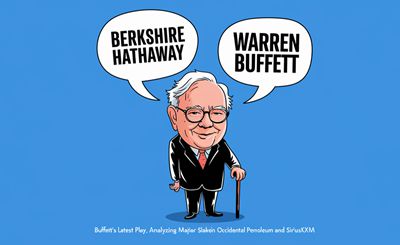Uber vs Lyft: A Comparative Analysis for Investors
The ride-hailing industry has been dominated by two major players: Uber Technologies (NYSE: UBER) and Lyft Inc. (NASDAQ: LYFT). Both companies have revolutionized urban transport, offering on-demand services that have disrupted traditional taxi services. As the industry matures and both companies strive for profitability, investors are closely monitoring their performance to determine which stock represents a better buy. This report will delve into the financial health, market performance, and future outlook of Uber and Lyft to provide a comprehensive analysis for potential investors.
Financial Health and Market Performance
Uber’s Position
Uber’s financial health is robust, with the company significantly beating earnings expectations. Uber reported an earnings per share (EPS) of $0.29, surpassing the -$0.21 per share that was anticipated. Sales also exceeded top-line expectations at $8.60 billion, up 49%. This impressive growth in sales indicates a strong recovery and an ability to scale effectively. Uber’s revenue size is eight times larger than Lyft’s, which showcases its vast market presence and diversified business model, including food delivery and freight services.
Lyft’s Trajectory
Lyft, while smaller in scale, has shown promising financial indicators. The company grew its active riders by 32% year-over-year (YOY) and increased average revenue per rider by 9%, which is higher than pre-pandemic levels. Despite trading below its IPO price, Lyft has demonstrated profitability on an adjusted earnings before interest, taxes, depreciation, and amortization (EBITDA) basis, which is an encouraging sign for investors looking for a company with a leaner cost structure.
Growth Prospects and Analysts’ Predictions
Analysts predict gains of 50% for Uber and 43% for Lyft over the next 12 months, indicating strong potential for both stocks. Uber’s sales are expected to grow 42% this year compared to last year, according to consensus estimates. This growth is attributed to the company’s broad market reach and diversified revenue streams, which provide a hedge against market volatility.
In contrast, Lyft’s focus on the North American market for ride-hailing services may limit its growth potential compared to Uber’s global footprint. However, Lyft’s specialization in this niche could also be seen as a strength, allowing for deeper market penetration and more efficient operations within its core market.
Comparative Analysis and Investment Outlook
When comparing Uber and Lyft, it is essential to consider several factors, including market capitalization, revenue growth, profitability, and future market opportunities. Uber’s larger size and diversified business model give it a distinct advantage in terms of market capitalization and revenue growth. Moreover, Uber’s expansion into other services such as Uber Eats and Uber Freight has allowed the company to tap into new revenue streams and reduce its reliance on ride-hailing alone.
On the other hand, Lyft’s profitability on an adjusted EBITDA basis suggests that the company has a more focused approach to its core ride-hailing business, which could lead to more efficient operations and better margins in the long run. Additionally, Lyft’s steady growth in active riders and revenue per rider indicates a strong and loyal customer base.
Conclusion
Based on the analysis of financial health, market performance, and growth prospects, Uber appears to be the more favorable investment for those looking for a diversified and globally-present company with multiple revenue streams. The company’s larger scale, significant sales growth, and expansive market reach position it as a leader in the ride-hailing industry with the potential for continued growth.
However, investors with a preference for a company with a leaner cost structure and focused market approach may find Lyft to be an attractive investment. Lyft’s profitability on an adjusted EBITDA basis and its growth in active riders and revenue per rider reflect a company with a solid foundation in its core market.
In conclusion, while both Uber and Lyft present compelling investment opportunities, Uber’s diversified business model, larger scale, and significant sales growth make it a more attractive option for investors looking for broader market exposure and robust growth potential. Therefore, in the eyes of Wall Street analysts and based on the available data, Uber is recommended as the better buy for investors at this time.
To become a better investor with our AI Assistant @ kavout.com/investgpt


